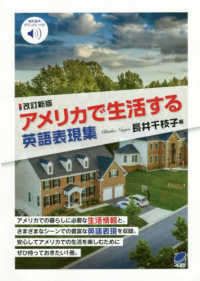Full Description
This is the sixth volume in a series of books devoted to the history, documentation and analysis of music in Asia. Four essays are dedicated to documents from the past: fifth-century Korean tomb paintings; tenth-century Chinese scores for lute; eighth-century Japanese documents; early Chinese sutras on the perception of sound. The remainder concern contemporary documents: the notations of the Japanese end-blown flute (shakuhachi) and lute (biwa) and their relationship to performance; acoustical analysis of contemporary shakuhachi. The focus on musical documents, whether ancient or modern, provides a unifying thread which renders this volume unique in the ethnomusicological literature on East Asian music.
Contents
Preface; Koguryo instruments in Tomb No.1 at Ch'ang-ch'uan, Manchuria Song Bang-Song; Shakuhachi honkyoku notation: written sources in an oral tradition Riley Lee; Single sound: basic structure of the music of the Japanese flute shakuhachi Andreas Gutzwiller and Gerald Bennett; A report on Chinese research into the Dunhuang music manuscripts Chen Yingshi; Translation Coralie Rockwell; Where did Toragaku come from? David Waterhouse; Musico-religious implications of some Buddhist views of sound and music in the Surangama Sutra Gregg W. Howard; Composition and improvisation in Satsuma biwa Hugh De Ferranti; Glossary of Chinese, Japanese, and Korean terms.





